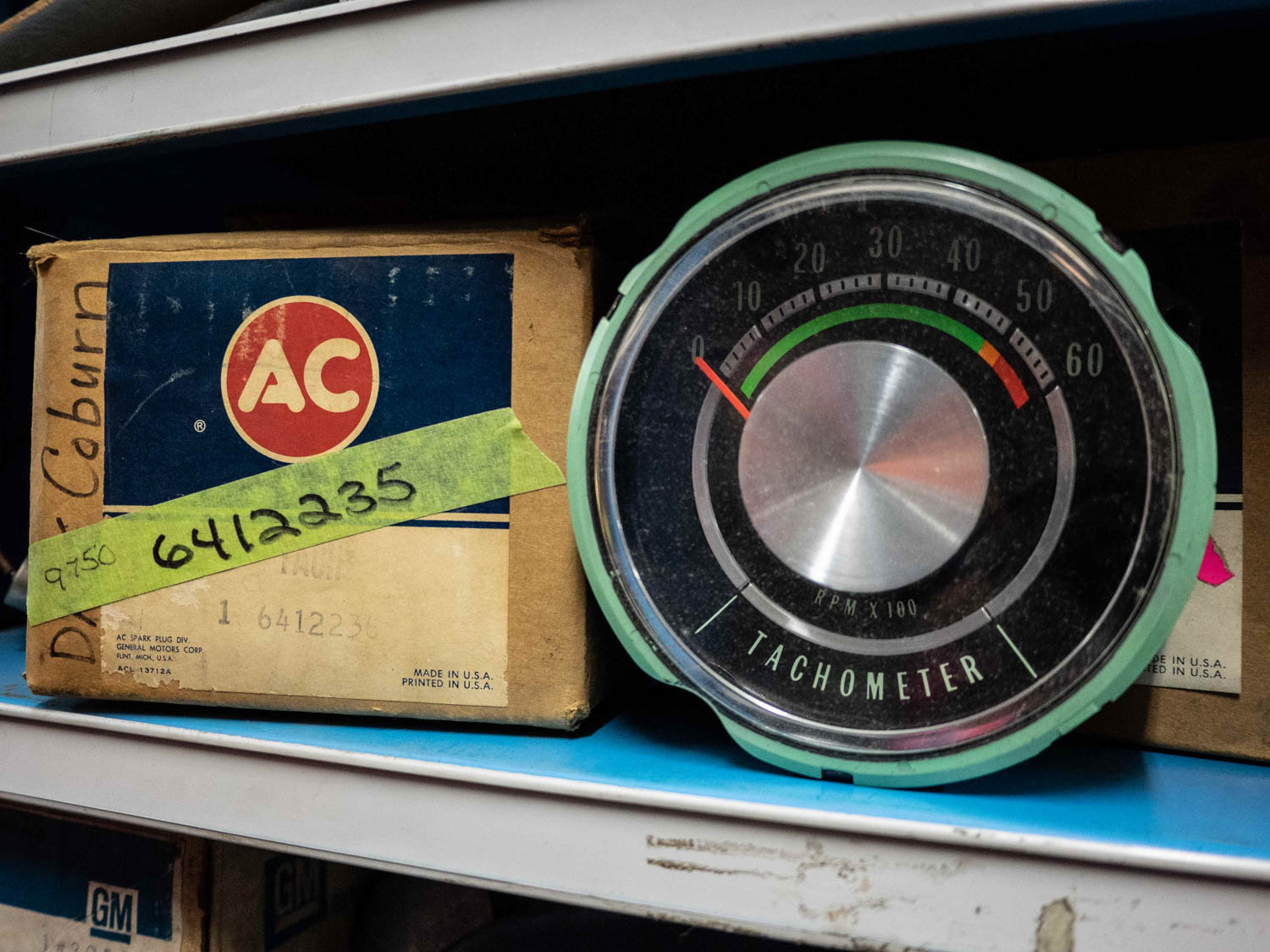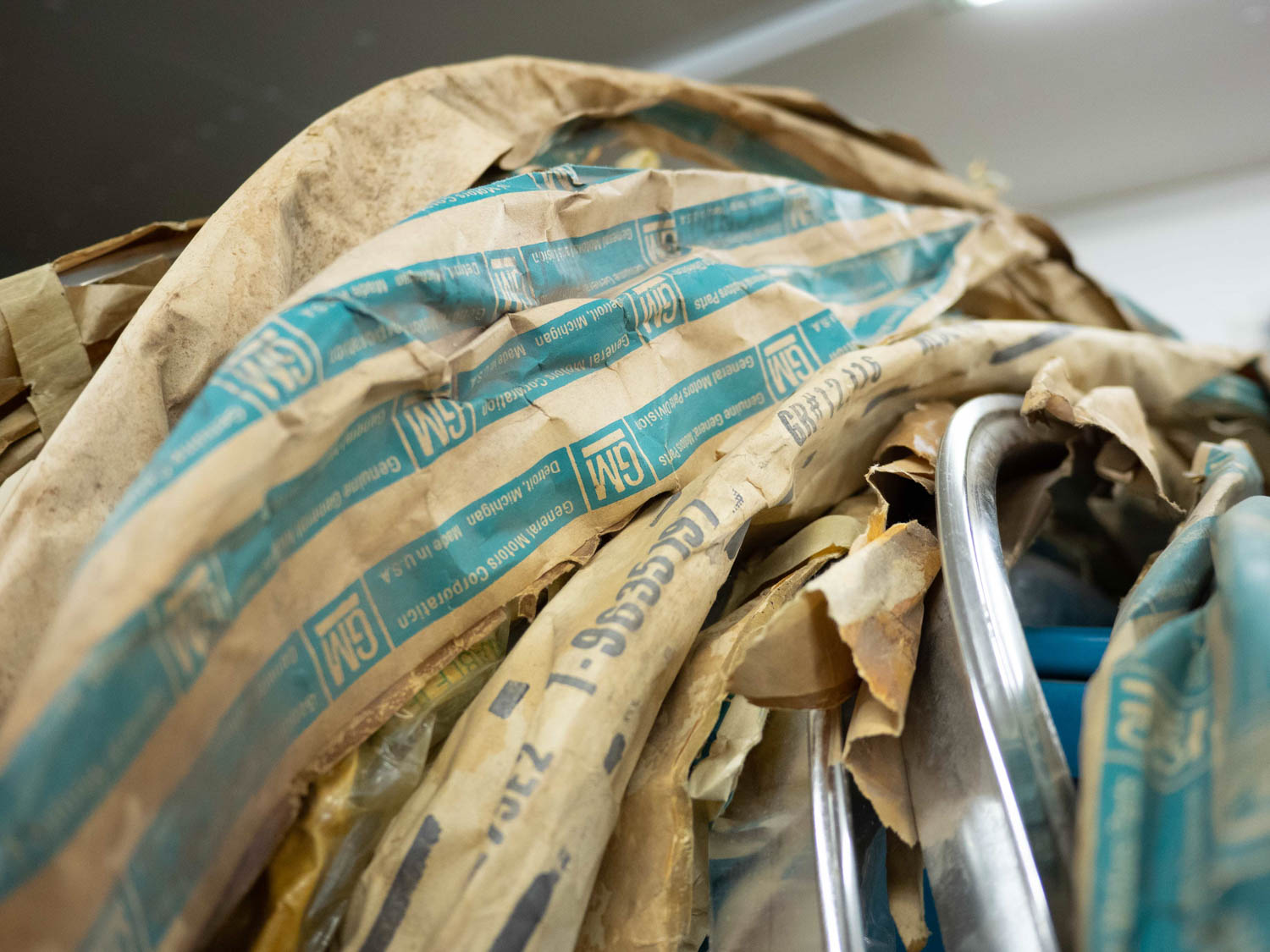What you need to know about replacement parts that keep your classic alive
You love your car. When it needs repair, you want to install the best parts. But what are those? To many enthusiasts, the dogma is: “Buy only original equipment parts at the dealer. Everything else is junk.” Unfortunately, it’s not that simple. The real answer—and everyone will hate this—is “it depends.”
OE VS. OEM

First, let’s get the terminology straight. The difference between “original equipment” (OE) and “original equipment manufacturer” (OEM) parts is confusing. OE, or “genuine” parts, are those that should be identical to parts that were installed when the car was built. This should be what you’re getting when you buy parts at the dealership. However, most parts on a car aren’t produced by the car manufacturer; they’re sourced from an outside vendor. OEM refers to that vendor. For example, most electrical parts on GM cars are supplied by ACDelco. So, sure, you can go to the dealership and buy OE plugs, but you can also simply read the part number off your ACDelco plugs and order the exact same OEM part from any number of suppliers for less money. The rub is that many OE parts don’t have the manufacturer’s name on them, so to purchase the equivalent OEM part, you’d need to know who made it.
Although there should be little difference between an OE and OEM part, “little difference” doesn’t mean “no difference.” An OE part might be embossed with the car’s brand, so if a concours judge is checking for such things, there is a difference. Some of what you’re paying for when you buy an OE part at the dealer is peace of mind on the provenance. If you’re buying the part from a trusted high-volume supplier, you should be okay, but an OE or OEM part on eBay in an open box from an individual or low-volume seller could be returned goods. The world is full of counterfeit parts, sometimes with stamped logos and color-printed factory boxes, so if you see an online merchant advertising “genuine” parts that are dramatically cheaper than those of other sellers, buyer beware.
If you own a car for which there is no longer any dealer network, there is no dealer counter from which to buy OE parts and probably scant few OEM parts, so you’re left with decent-quality used parts or…
Aftermarket parts

Aftermarket parts refer to those produced by any manufacturer other than the OEM. Nowadays, these can even include low-volume 3D-printed parts, but that’s a topic for another day.
There are multiple levels of quality here. Aftermarket parts manufacturers love to bandy about the phrases “OE quality” and “OE spec,” but as there’s no compliance mechanism, these terms are meaningless. You need to read the reviews on enthusiast forums to see what people who have used them have to say. Nan Gelhard is senior manager for advertising and PR at Summit Racing, which has been supplying parts to the hobby for 51 years. “A lot of aftermarket manufacturers have OE contracts and have to meet rigid quality-control standards,” she said. “We have a merchandising program that reviews a product before it’s added to our line. We have more than 1600 lines, and we watch return rate by individual line and address any issues with our suppliers directly. So now, when a manufacturer says that a part is a direct fit, it really is.”
My feeling is you should have few qualms about installing something like an inexpensive aftermarket hood strut, as it’s easily replaced if it fails, but for labor-intensive parts like lower control arms, it’s probably best to stick with OEM.
I asked my friend Lindsey Brown, who wrenches on a variety of vintage and contemporary cars at the Little Foreign Car Garage in Waltham, Massachusetts, what problems he sees with aftermarket parts. He sources quality components largely from Worldpac, the company that supplies many shops with OEM and aftermarket parts. Brown rattled off the top of his head a litany of quality-control issues he’s encountered, including axle and CV assemblies that last about 18 months, giubos that crack, heater control valves that leak within a year, bad fuel senders and radiator switches, replacement headlights whose internal adjustment mechanism breaks, and condensers that fail within a few miles. And he was just getting warmed up.
Sometimes the aftermarket can supply parts that correct deficiencies the car company was not willing to remedy. For example, it’s common for plastic radiators, expansion tanks, and thermostat housings to crack with age and heat cycling. Their aftermarket aluminum counterparts are generally more reliable. Similarly, certain high-flow water pumps with redesigned impellers outperform the stock water pumps. Do your homework, in other words.
Lateral supply

Although sheetmetal and many interior parts are usually unique to a particular make and model, mechanical and electrical parts often aren’t. Brakes, oil pumps, fuel pumps, fuel injectors, all manner of switches, and many other items can often be sourced from sibling makes or models. If you can find cross-reference material on a forum, this kind of “lateral supply” can increase the number of avenues for parts, as well as lower their cost.
NOS

The term new old stock (NOS) refers to old, unused, never-installed OE or OEM parts. For many folks, the original part in the dealer box and wrapper is the holy grail, and for things like body panels, trim, engine blocks, and cylinder heads, NOS parts are often the highest-quality parts available. But for suspension or hydraulic parts, you might not want items that have been sitting on a shelf for decades without their rubber O-rings being exercised.
John Robison of J.E. Robison Service in Springfield, Massachusetts, concurs. “NOS sheetmetal is great,” he says, “but an NOS shock that’s 30 years old might fail as soon as we use it.
“We ordered some rubber straps for a 1972 Rolls-Royce and received straps whose date code said they were made in ’79. They broke when installed.”
Supplies change as cars age

When a car is new, the only available parts are OE or OEM. Since nearly all cars come with at least a three-year/36,000-mile warranty, the car company has incentive to build them using parts that last at least as long as that window. If a part is shown to fail quickly, the carmaker might supersede it with an updated part. As cars age and their maintenance needs become known, the aftermarket begins supplying parts. For a period of time, you might have many choices for normal wear-and-tear parts such as brake pads, water pumps, exhaust systems, shocks, and lower control arms, although something like a dashboard or door card will likely remain a dealer-only item.
But as decades pass and fewer of the cars are still on the road, the sources of parts dry up. GM and Ford dealerships are independently owned, and each dealership appears to be free to liquidate parts inventories if it feels they have aged out of profitability, sending NOS parts into the hands of private companies. Sometimes, normal wear-and-tear parts can still be ordered through the dealer, but body panels and trim parts might get listed in the catalog as no longer available (NLA). At some point, even normal wear-and-tear parts might go on what’s sometimes called worldwide cosmic back order. (Okay, I made that one up.)
If there’s enough pent-up demand, a car company that claims to value its heritage might commission a manufacturer to do a run of parts. These contracts are generally awarded to the lowest bidder, with a resultant decrease in quality. That means you have no guarantee the “OE” part you buy at the dealer will be the same, have the same quality, or even look the same as the one that was originally on the car; the degree to which it is “genuine” might be debatable. I’ve had Bosch-branded points and condensers, purchased at the dealership in BMW boxes, fail inside of 100 miles.

The subject of reproduction parts is a fascinating gray area for what’s “genuine.” The company Original Equipment Reproduction, or OER, provides restoration parts for GM and Chrysler Group cars. Its website says: “Many OER products are officially licensed by General Motors and the Chrysler Group. All OER parts are reverse engineered or manufactured using the original blueprints when available to ensure the closest possible reproduction available on the market. When available, original factory tooling is utilized to insure [sic] complete originality.” I have no experience with OER, but it’s paying GM and Chrysler to license their logos, so the “genuine” bloodline of the products isn’t as direct as when an auto manufacturer contracts a supplier to do a run of parts.
I asked Ben Tucker of Camaro Central whether its reproduction Camaro fenders are from OER. “No,” he said, “but we buy ’em from the same [factory] they do.” This essentially mirrors the relationship between OE and OEM, but one step removed.
Hagerty special projects editor and muscle-car guy Davin Reckow offers an interesting perspective on the mystique of NOS body panels: “With any sheetmetal you find today that is still factory original, the reality is that it may have been a second. Someone test-fit it, didn’t like what he saw, threw it up on the rafters, and got another one. Is it better than repro? Probably, but maybe not.”
The challenge

At some point, a car company might stop supporting its cars entirely. Many of them have. Enthusiasts can chest-beat about genuine dealer parts all they want, but you can’t buy what’s no longer available. John Robison sums up the situation well: “For higher-end restorations, the poor quality of modern replacement parts drives us toward repair and replating of old trim, rebuilding and bushing worn-out carbs, and generally fixing and preserving the older parts. In general, shops or restorers need to be more flexible and have a wider range of skills, as many of these items are far from being simple bolt-ons. Owners need to understand that considerable rework might be needed to install even genuine stuff.”
Well, then, OE, OEM, aftermarket, or NOS? As I said, it depends. So probably all of them, in some appropriate mix.
The article first appeared in Hagerty Drivers Club magazine. Click here to subscribe to our magazine and join the club.



need spreader part for spreader wheel